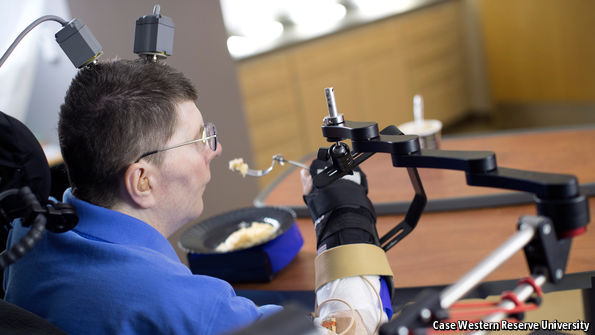Analysing brain signals to let a patient control his arm

DURING a 250km (150-mile) bike ride for charity in Ohio, William Kochevar found himself cycling behind a mail van when it pulled over to make deliveries. Distracted and tired, Mr Kochevar did not brake in time. The accident, in 2006, left him paralysed from the shoulders down. Now, with the help of electrodes that transmit signals from his brain to his muscles, he has been able to grasp a fork and feed himself for the first time in over a decade. The procedure that allowed Mr Kochevar to achieve the feat is reported in the Lancet this week.
Bolu Ajiboye and Bob Kirsch, biomedical engineers at Case Western Reserve University, in Cleveland, used functional magnetic resonance imaging to locate nerve cells responsible for arm movements in the motor cortex of Mr Kochevar’s brain. The technique highlighted a patch of his brain to which the blood supply increased whenever Mr Kochevar imagined moving his arm. The team then implanted at that spot two 4x4mm chips, each with an array of 96 tiny electrodes, to measure the electrical activity of the 100 or so nerve cells there. They also implanted 36 stimulating electrodes in the muscles of his right hand and arm.
With the…Continue reading
Source: Economist




